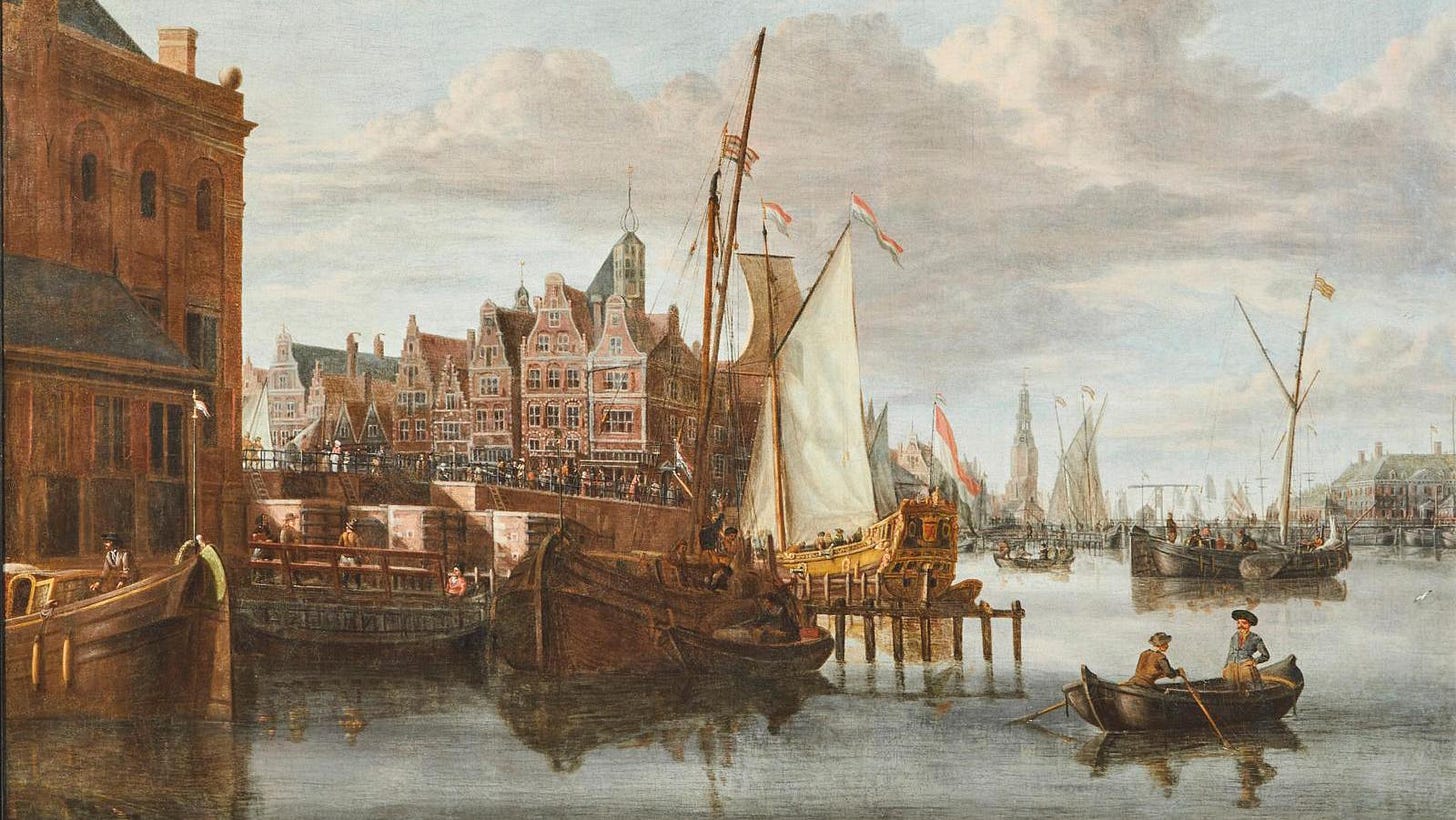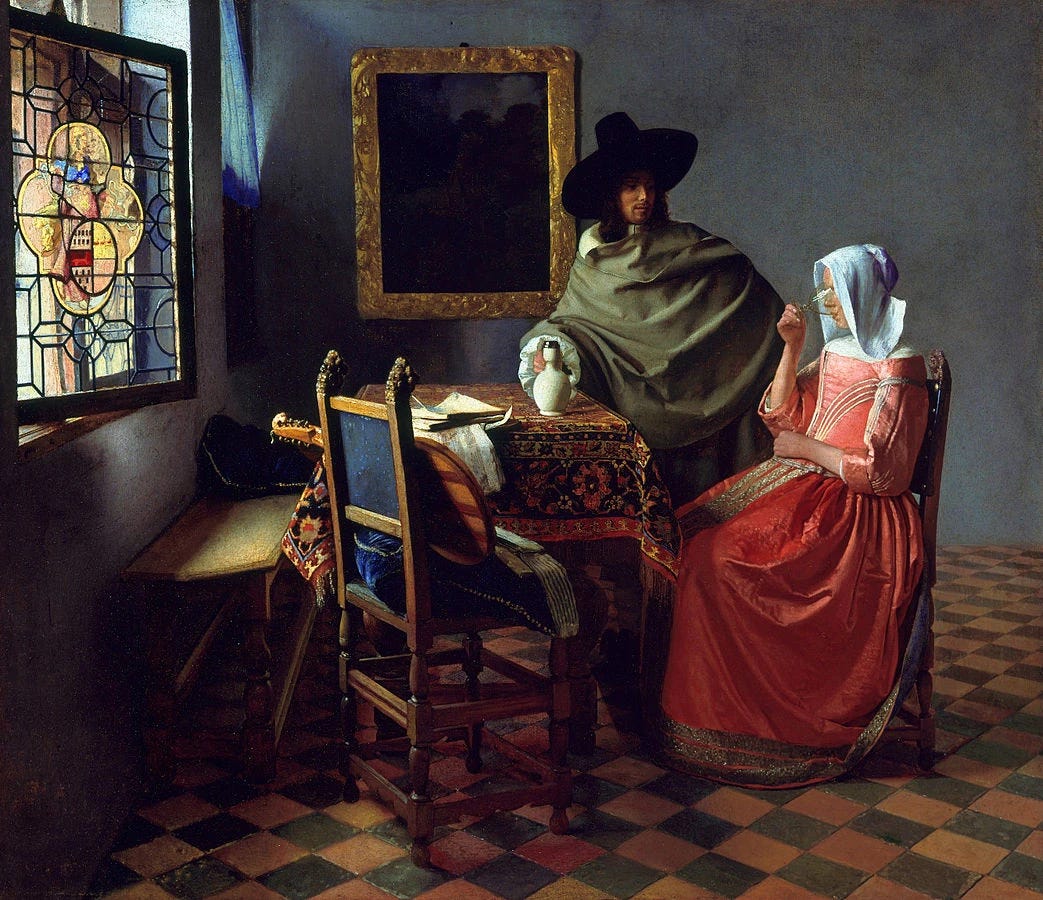Diving into the Golden Age of Amsterdam
As I jumped into the first draft, the producer had arranged a research trip for the two of us to Amsterdam. It was as fantastic as it was treacherous.
It was early January of 2006 and Amsterdam presented itself not in the vibrant colors of the Dutch masters, but instead in grey on grey. Dark clouds hung over the city and drizzling rain was a constant companion as we explored the city on our research quest for the feature film adaptation of The Coffee Trader.
A word about research first: Research is fun for most writers and I’m no different. I love to learn, to go deeper and deeper, to get a sense of time and place, of colors, or scents - everything that then helps me write a script that conveys that sense of immersion, of visceral authenticity. But research can also be a dangerous trap, because there’s always more to learn.
If you’re not careful you research and research some more and you’ll keep procrastinating. The little researcher inside of you loves this, heck, it’s so much easier than writing! And it’s also easy to rationalize the time you spend researching, after all, you need to know the cost of a loaf of bread, the ways of street peddlers and the artistry of Delft tiles to eventually craft that awesome script … right? Truth is, I know from other writers, and I’ve fallen into that trap myself - you can research yourself to death and end up with a ton of information and a script consisting of nothing but blank pages.
Just imagine the dangers of never-ending procrastinatory research when it comes to the Golden Age of Amsterdam! The buildings, the canals and bridges alone are incredible - so much of what was there then is still here today. And to get a sense of what life was like on the inside of those buildings, there are not only the fantastic works of Vermeer and company who were masters at capturing everyday life, but some of them have been turned into museums. In Amsterdam, you can walk up the narrow creaking staircases citizens used in 1650, you can get a clear sense of space and detail and with everything you see, it informs another moment in your script-to-be.
Most tourists visiting Amsterdam will likely make Rembrandt’s home part of their must-see list. It was, of course, also on mine. It would be just one of many places I saw during that week. Rembrandt van Rijn (1606 - 1669) was right there, in Amsterdam, during the time of the novel - and the inside of his house was sheer inspiration. I instantly knew what it would feel like if characters had an argument in the kitchen, or the backyard, or a study, or a bedroom.
Of course, I also drew a great deal on inspiration and insight from Johannes Vermeer and other of the novel’s contempories who captured little, seemingly insignificant moments, in indelible ways. We naturally spent a good deal of time at the Rijksmusem for that very reason. Here some of those Vermeers:
You instantly get a great sense of the cold tile floors, the light, the drapes, furnishings, baskets and more. As one of the characters in the novel The Coffee Trader is a servant girl, Vermeer’s Milk Maid was the obvious inspiration.
Another one of the main characters in the novel secretly visits a Catholic church. While the Protestant city government was quite tolerant with other religions, it did put limits in place. The Jewish synagogues could be built, but were not allowed to look like temples. And Catholics were not allowed to practice their faith in public places - hence, there were no public churches.
Dutch merchant Jan Hartman was both Catholic and wealthy - and so he found a way by building an entire church in the attic of his house! This church, the “Our Lord in the Attic” church, has also survived from that time and is now a museum - quite fascinating to visit - and, again, hugely inspiring for me when I climbed that narrow staircase and got a sense of secrecy, claustrophobia …
… and then elation when the space opens up in such unexpected ways up in the attic. Easy to imagine what it must have felt like, right?
The producer and I were far from done - it was a whirlwind of impressions, notes and people for the first three days. We also met with a historian who told us all about the Esnoga, the Portuguese Synagogue in Amsterdam. We got a special tour that was highly instructive - and impressive! As the novel’s protagonist is a Sephardic Jew and much of the plot revolves around life and culture and rules of Sephardic Jews in Amsterdam around 1650, this research was pure gold. While the Esnoga was built shortly after the novel’s time frame, I still learned and saw a great deal.

The arrival of the Sephardic Jews, with their wealth and trading experience, had a great deal to do with the rise of Amsterdam, the powerful Dutch East India Company, and the first Stock Exchange in the world - this is the fascinating world of The Coffee Trader. Below a few more paintings of the time, with the Stock Exchange, life in the streets and at the harbor, and moments in between. Honestly, can anyone not be inspired, right?



I was already deeply immersed in the writing of the first draft, but that research trip, if anything, supercharged my efforts. Which reminds me - the producer left after three days, and I stuck around to see… nothing in particular. For three more days I was simply there and walked the streets and bridges and sat on benches, watching people, watching boats go by, observing waterfronts, buildings - like I said, I came back supercharged!
Below just a few more wonderfully mundane moments, captured by Pieter de Hooch, that really helped me get into the world. As mentioned, Amsterdam both then and now really does make it research-easy for any writer!
























Thank you for this article!
Noted re research. I am sure I have heard of the danger of endless research from someone else, another writer, whose name now escapes me.
I lived in The Netherlands for a few years while at Uni (not Amsterdam but I did visit). It makes a research trip rather easy, I agree. Glad to hear it has provided you with lots of inspiration and feel for the place. Would you say physically visiting a place is the best way to do that?
Also very much appreciated are the various painting references and the pictures you have shared with us!
I feel like I took a trip back in time to Amsterdam while reading your piece. I loved the film Tulip Fever, didn’t know Amsterdam was also a coffee trading city.